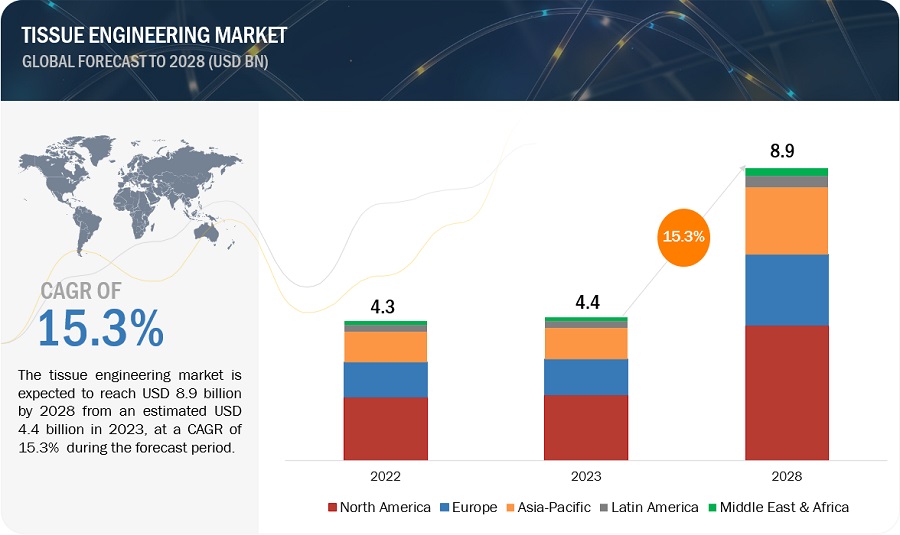The global tissue engineering market is projected to expand from $4.4 billion in 2023 to $8.9 billion by 2028, representing a strong CAGR of 15.3%. Key growth drivers include the rising need for advanced regenerative medicines to treat chronic and degenerative diseases, as well as increasing incidence of traumatic injuries from accidents.
Download a PDF Brochure: https://www.marketsandmarkets.com/pdfdownloadNew.asp?id=34135173
While high treatment costs currently restrain market growth, exciting technological advancements like 3D bioprinting, organ-on-chip technology, and Quantum Magnetic Resonance Therapy (QMRT) present attractive future growth opportunities. Traditional organ transplants remain a more cost-effective alternative currently and are a challenge the industry must overcome.
The tissue engineering ecosystem involves hospitals, clinics, technology providers, regulatory bodies, and collaborative networks all working together to advance tissue engineering solutions. Scaffold products, especially synthetic and biological materials like collagen and hydrogels, are the fastest growing segment. Orthopedics and musculoskeletal disorders are the dominant application area.
Geographically, North America leads the tissue engineering market, followed by Europe, driven by a thriving healthcare sector, intensive research activities, and rising degenerative disease rates. Key players include Organogenesis, AbbVie, Baxter, BD, Integra Lifesciences, and Johnson & Johnson, among others.
Recent developments include new product launches like MIMEDX’s placental-based allograft EPIEFFECT, Teijin’s SYNFOLIUM cardiovascular patch, and Integra’s SurgiMend collagen matrix, as well as AbbVie’s acquisition of Allergan to expand into new therapeutic areas. The future of tissue engineering looks very promising as the field advances.

Leave a comment